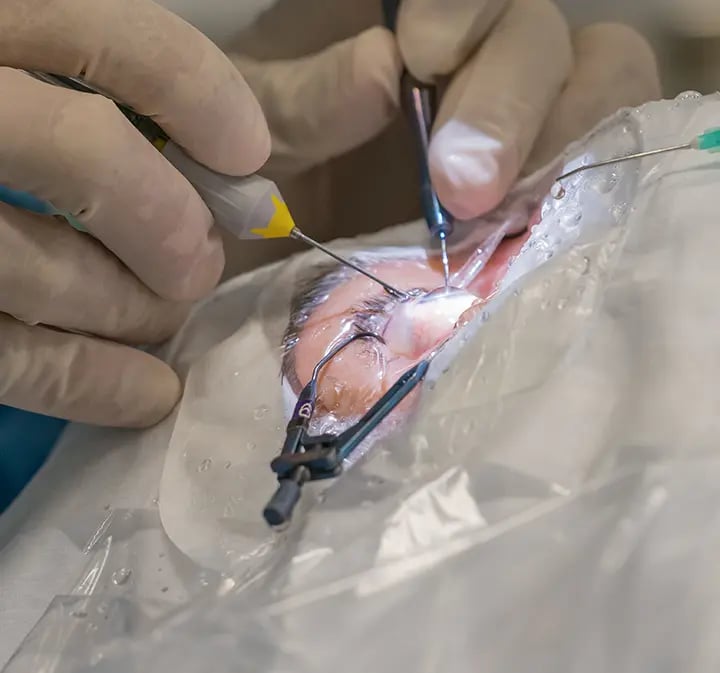Glaucoma

.webp?width=720&height=673&name=glaucoma%20(1).webp)
Glaucoma
Glaucoma is a silent disease known as the thief of sight, which directly affects the optical nerve, due to the increase of intraocular pressure, due to the lack of drainage of aqueous humor. If it is not detected in time, it may generate progressive and irreversible deterioration of the visual field (it is the second most common cause of blindness in the U.S.).
At first, the patient does not show pain or any other symptoms or changes in his/her sight. But then, he/she may suffer from what is commonly known as tunnel vision, described as the sensation of looking through a tunnel.
Causes: There are many factors which may contribute to glaucoma appearance, but the most important one is ocular pressure. In most cases, the increase in ocular pressure is secondary, when compared to the need to eliminate aqueous humor (intra-ocular liquid).
Procedure: Generally, eye drops may control glaucoma, but if it is very advanced, a filtering surgery known as trabeculectomy becomes advisable. It allows the release of aqueous humor from the eye, and generates the decrease of high intraocular pressure. Finally, the surgeon resorts to valves or implants with a silicone tube, which is inserted inside the ocular globe to make the drainage of aqueous humor easier. The treatment with argon laser (laser trabeculoplasty) helps medications to decrease ocular pressure. Yag laser (laser iridotomy) opens a hole in the iris to allow the circulation of aqueous humor. In no case is it possible to reverse the caused damaged, and improve the patient’s sight.
How fast does glaucoma advance?
Glaucoma is an ocular disorder which may damage the optical nerve and cause loss of sight. There are several kinds of glaucoma, and the rate of progression may vary according to the type and seriousness of the disease.
Open-angle glaucoma (also known as chronic glaucoma) is the most common kind, and usually progresses slowly, with symptoms which may not appear in many years. In some cases, sight may remain stable for years, or even decades, while in other cases, it may advance more rapidly.
Angle-closure (also known as acute glaucoma) is less common, but it is more serious, as it may cause rapid loss of sight, and even blindness, if it is not treated. Usually, the symptoms of angle-closure glaucoma appear suddenly, and may cause ocular pain, blurred vision, and nausea.
Glaucoma treatment may include eye drops, oral medication or surgery to decrease intraocular pressure. If it is detected in time, and treated timely, it may be controlled, and loss of sight may be either prevented or delayed.

 Pay your appointment
Pay your appointment

